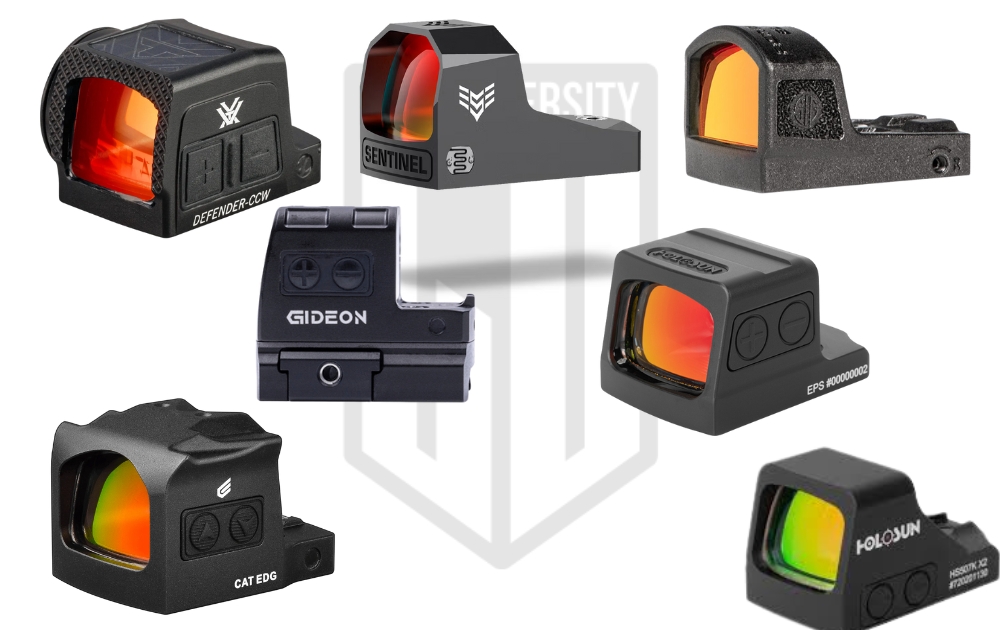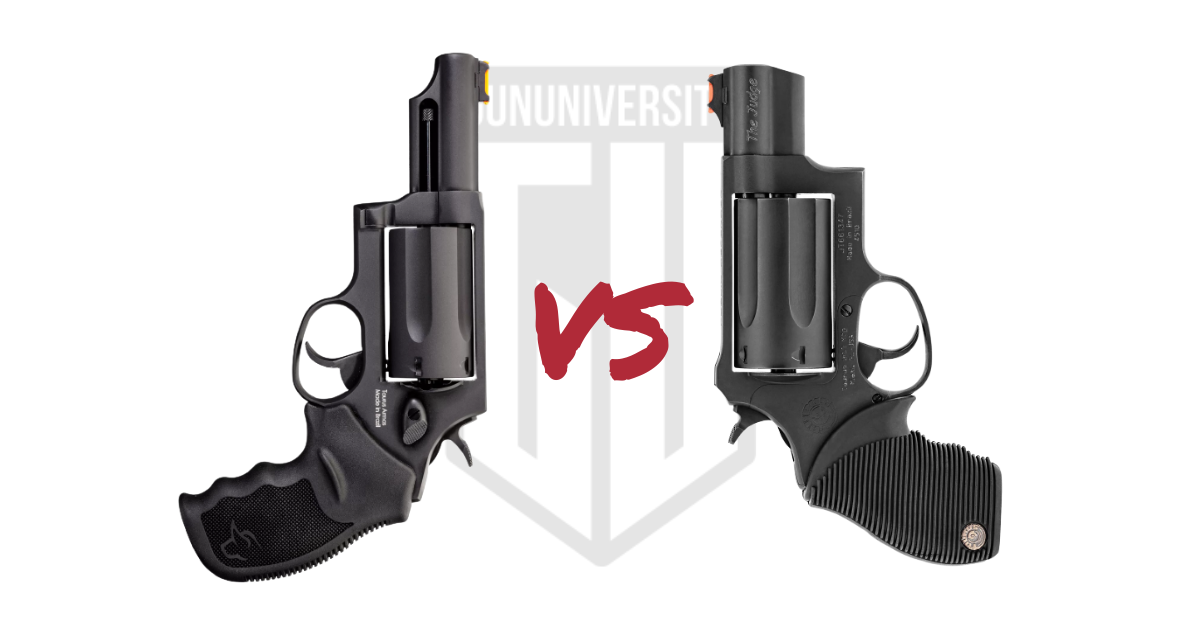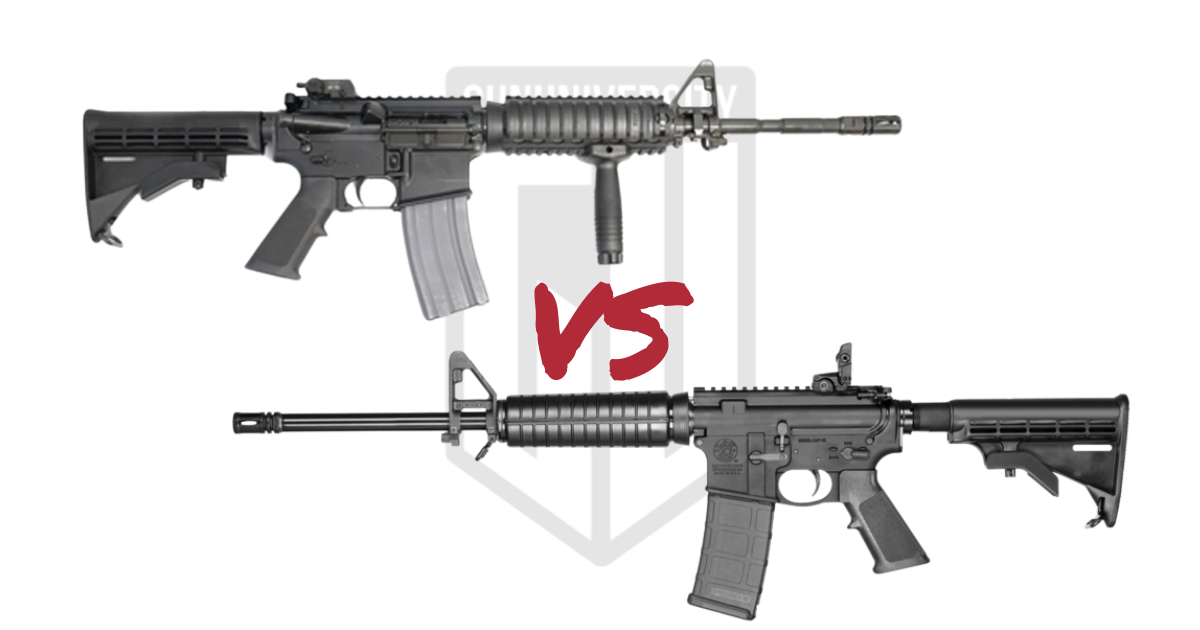300 Blackout vs 5.56 NATO: Top AR-15 Cartridge Comparison
5.56x45mm NATO and 300 Blackout (BLK) are cartridges that both see extensive military and law enforcement use. 5.56 NATO has a lengthy history stretching back to the 1970s while 300 BLK was designed in 2009. These are two cartridges with what might appear to be similar applications, but they’re quite different. How do the 5.56 NATO and 300 BLK cartridges vary? We’re here with all the details. It is time for 300 BLK vs 5.56 NATO.
300 Blackout vs 5.56 NATO Spec Comparison

300 Blackout
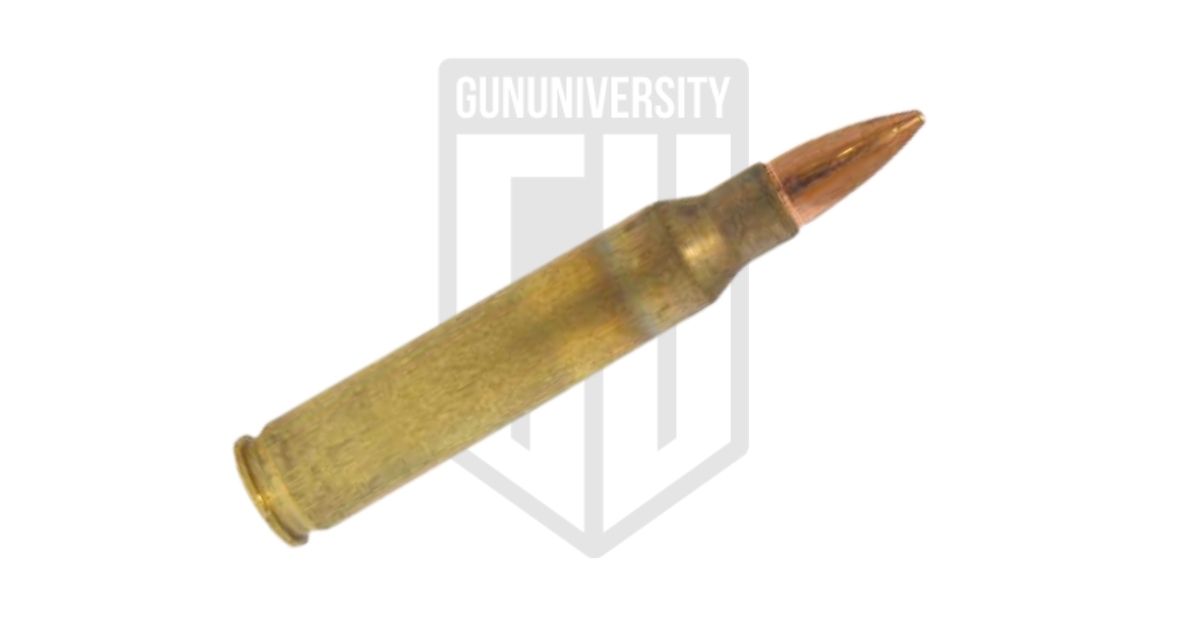
5.56 NATO
Why Compare 300 Blackout vs 5.56 NATO?
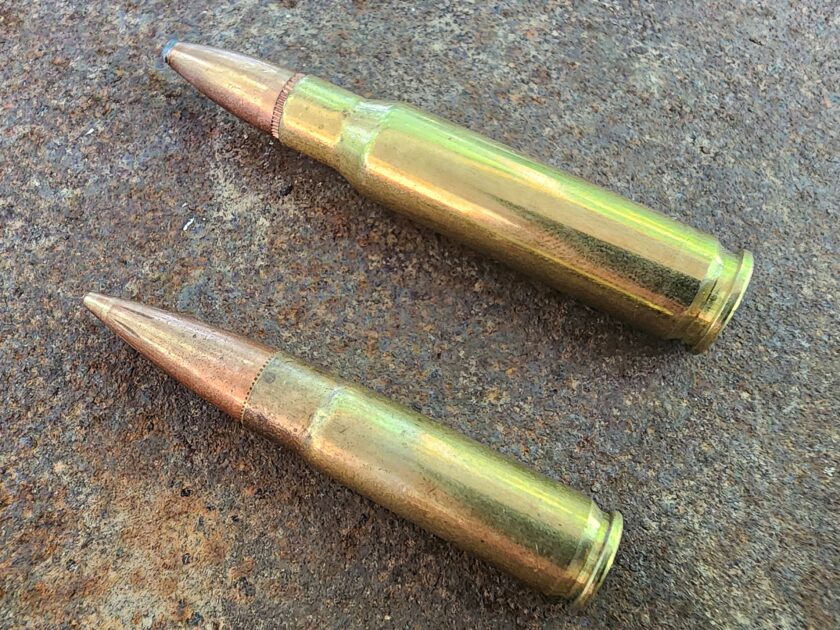
The answer to why you’d consider comparing the 5.56 NATO cartridge to the 300 BLK is simple: Because both cartridges are used for similar things, and both have a significant fan base within the same AR-15 platform community. We often see 300 BLK as the new hotness, while relegating 5.56 NATO to being out of date and less useful, but the truth lies somewhere in the middle.
On the tactical side of the gun world, both cartridges tend to be touted as the best thing ever for defensive use. And on the hunting side, you’ll find close to equal numbers of hunters using 5.56 NATO vs. 300 BLK for game like feral hogs. There are even deer hunters who use both, seemingly interchangeably. So, who’s right? We’re going to take a deep dive into the history and ballistics of these two cartridges and answer that question once and for all.
It’s the cartridge vs. cartridge face-off: 5.56 NATO vs. 300 BLK.
5.56 NATO Review
Let’s consider the real life performance of the 5.56 NATO. Decades of use, numerous applications, and countless loads make it possible for a close examination of the pros and cons of this cartridge.
5.56 NATO History and Purpose
As you likely know, the 5.56 NATO’s history begins in the military. Belgium company FN Herstal designed the 5.56 NATO in the 1970s in response to a request by NATO for a small, capable cartridge to replace the 7.62x51mm. The design of the 5.56 NATO very closely mirrors that of the 223 Remington, which was designed in the late 1950s by Remington Arms. In fact, the differences are small. At first glance, you’d think they were the exact same cartridge.
The 5.56x45mm NATO became the second official standardized NATO cartridge in 1980, and it’s remained standard issue for the military ever since. That doesn’t mean the United States military has never tried to replace it or never will. In fact, as of 2023, the military has the NGSW (Next Generation Squad Weapon) in production with Winchester, awarded the contract to produce the related 6.8mm NGSW ammunition. These rifles and cartridges are meant to replace the 5.56 NATO.
While the 5.56 NATO was first made for military use for the purpose of having duty guns with intermediate cartridges in a lightweight, handheld platform, things change. It didn’t take long for the cartridge to become popular among the public, and in the years since it first entered production, it is used for just about everything. People have adopted the 5.56 NATO for military and law enforcement activities, home defense, range use, and hunting.
Pros and Cons of 5.56 NATO vs 300 BLK
- Trajectory – 5.56 NATO has a flatter trajectory than 300 BLK
- Factory Loadings – 5.56 NATO offers a greater selection of loads from numerous manufacturers
- Cost – 5.56 NATO is typically more affordably priced than 300 BLK
- Energy – 5.56 NATO doesn’t produce as much energy as 300 BLK at longer distances
- Bullet Size – 5.56 NATO has bullets with smaller dimensions
- Efficacy – 5.56 NATO is less effective on closer-range targets
Best Ammo for the 5.56 NATO
When selecting ammo for 5.56 NATO, first stop and consider what you’re using it for. These are our top three picks for specific uses.
Hunting
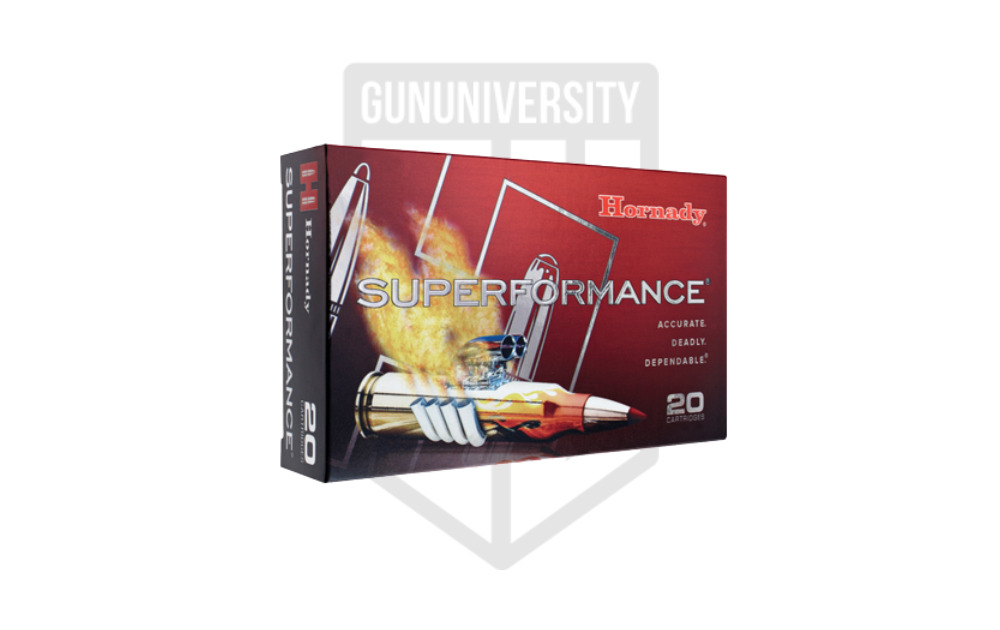
Hornady Superformance 5.56x45mm NATO 55 Gr CX
Marketplace |
Cost Per Round |
| gun.deals | $1.20 |
| Target Sports USA | $1.30 |
| Optics Planet | $1.52 |
Defensive
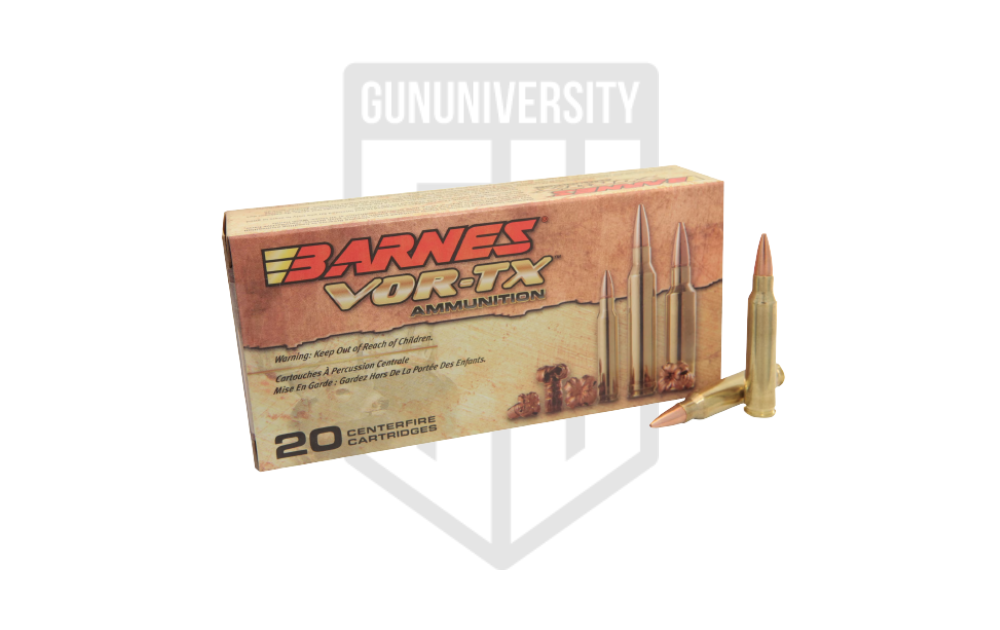
Barnes VOR-TX 5.56x45mm 62 Gr TSX
Marketplace |
Cost Per Round |
| gun.deals | $1.25 |
| Primary Arms | $1.35 |
| Optics Planet | $1.42 |
Practice
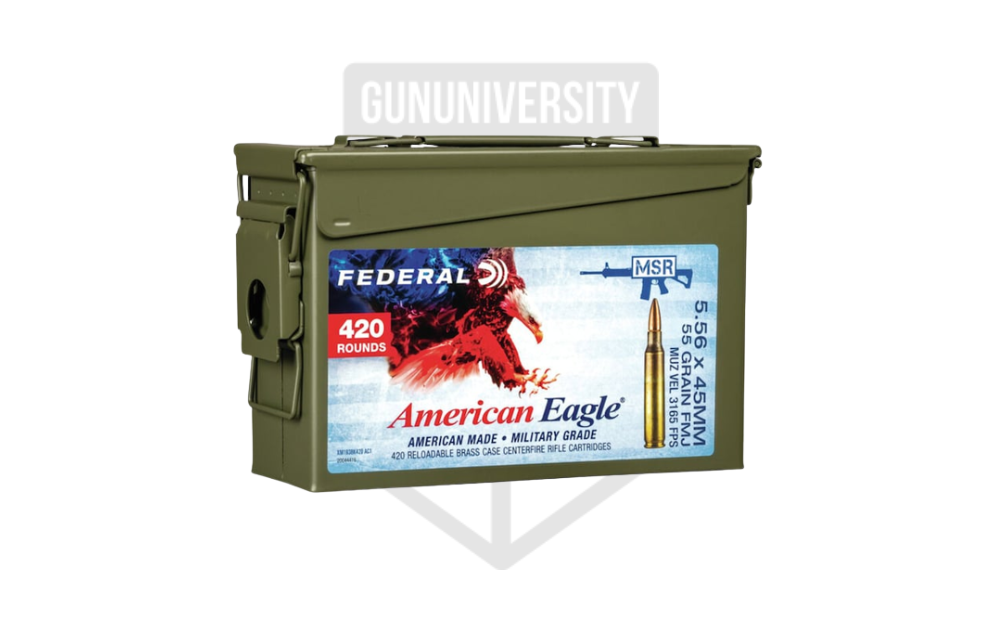
Federal American Eagle 5.56x45mm 55 Gr FMJ
Marketplace |
Cost Per Round |
| gun.deals | $0.56 |
| Gun Mag Warehouse | $0.62 |
| MidwayUSA | $0.85 |
300 Blackout Review
We have used the 300 BLK for everything from law enforcement applications to hunting. Thanks to its popularity, there’s a wealth of information available about its ballistics and general performance.
History and Purpose of 300 BLK
Advanced Armament Corporation (AAC designed 300 BLK in 2009) as the brainchild of Kevin Brittingham. While it’s sometimes called the 300 AAC Blackout, its SAAMI (Sporting Arms and Ammunition Manufacturers’ Institute) designation is simply 300 BLK. It was designed specifically for close quarters use, meaning close target engagement, and that meant it required a heavier bullet than something like the 5.56 NATO. In fact, it’s meant to be run suppressed, so if a shooter wants to get ideal performance and results from a 300 BLK, they’re going to need a short barrel and a suppressor.
Interestingly, 300 BLK technically got its start as 300 Whisper. That’s a cartridge that was designed by J.D. Jones in the 1990s. However, just as 223 Remington and 5.56 NATO aren’t identical, 300 Whisper and 300 BLK aren’t an exact match. Also, the 300 BLK is the SAAMI standardized cartridge.
The 300 Blackout got its start among special operations military teams and quickly found its way into the tactical market. It didn’t take long from there for it to be used by hunters and shooters just interested in ringing steel. While it might be young by some cartridge standards, it’s proven itself in many capacities in a relatively short period of time.
Pros and Cons of 300 BLK vs 5.56 NATO
- Kinetic Energy – 300 BLK produces greater kinetic energy at longer distances than 5.56 NATO.
- Close Range – 300 BLK performs better for defensive purposes at closer distances than 5.56 NATO.
- Supressabilty – 300 BLK is made for suppressed use, so it performs significantly better than 5.56 NATO when suppressed.
- Trajectory – 300 BLK has a faster drop rate than 5.56 NATO due to the heavier bullets.
- Recoil – 300 BLK produces more felt recoil than 5.56 NATO.
- Cost – 300 BLK costs more than 5.56 NATO.
Best Ammo for the 300 Blackout
When you’re choosing ammo for 300 BLK, make sure it’s the right load for the purpose. Here are a few of our suggestions.
Hunting

Federal Fusion 300 BLK 150 Gr FSP
Marketplace |
Cost Per Round |
| gun.deals | $0.85 |
| Gun Mag Warehouse | $1.24 |
| Palmetto State Armory | $1.25 |
Defensive
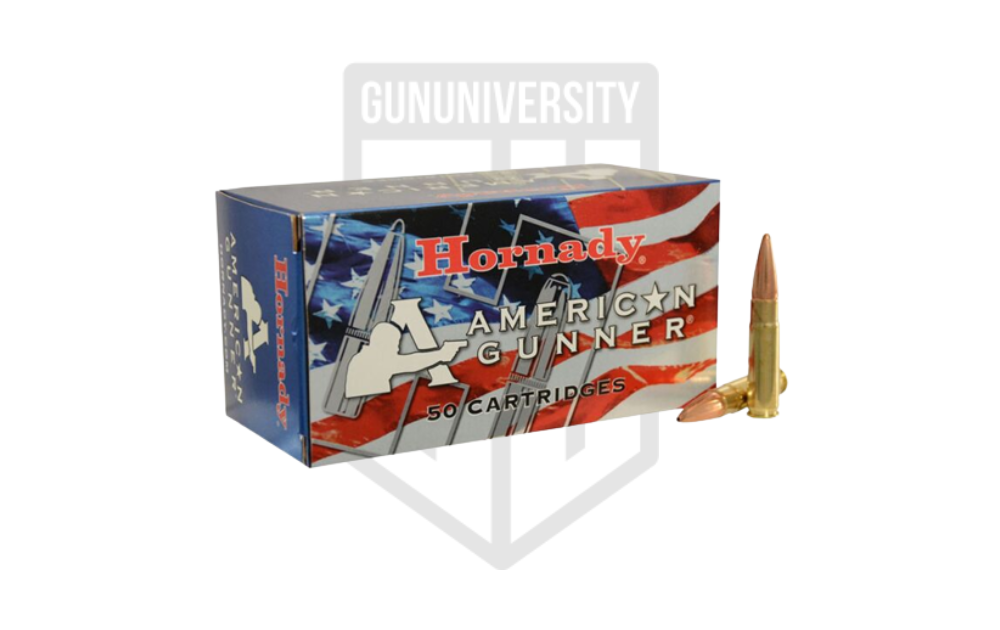
Hornady American Gunner 300 BLK 125 Gr HP
Marketplace |
Cost Per Round |
| Gun Mag Warehouse | $1.16 |
| Palmetto State Armory | $1.10 |
| Target Sports USA | $1.00 |
Practice
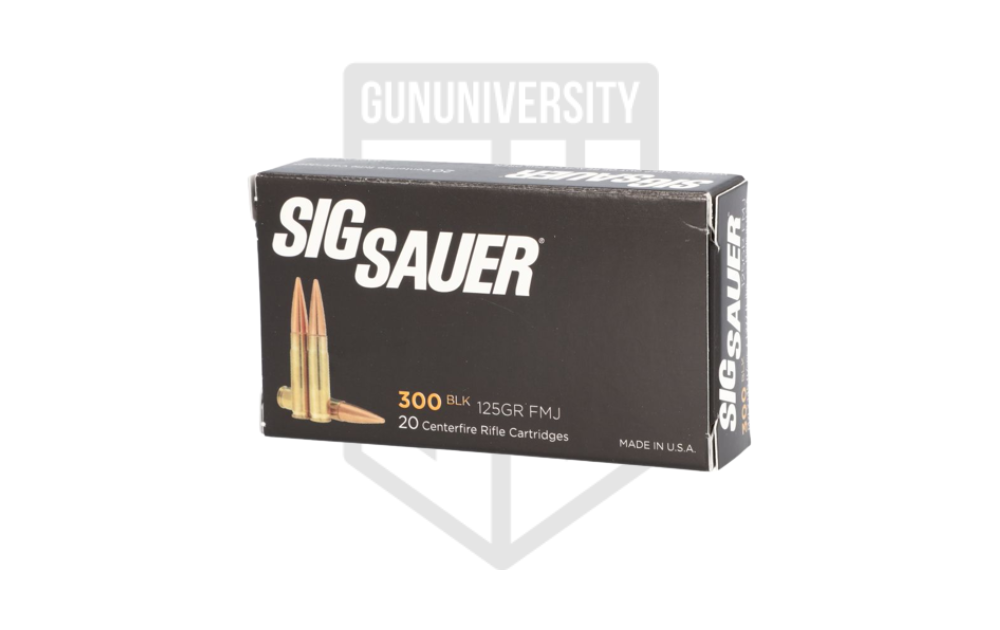
SIG Sauer Elite 300 BLK 125 Gr FMJ
Marketplace |
Cost Per Round |
| gun.deals | $0.82 |
| Optics Planet | $1.03 |
| Euro Optics | $0.84 |
Ballistics Comparison: 300 Blackout vs 5.56 NATO
From a ballistic perspective, there are some major differences between 5.56 NATO and 300 BLK. First of all, they created the two rounds for different target range engagement. Second, 300 BLK was designed for superior suppressed performance, meaning it wasn’t meant to be a mind-blowing performer at longer distances. Here’s how it all breaks down.
Something to keep in mind when comparing the ballistics of these two cartridges is that it becomes a case of apples and oranges. Ideally, one should compare ballistics when the loads are at least very similar, and when it comes to 5.56 NATO and 300 BLK, they’re just not the same. A big part of that is the difference in bullets. 5.56 NATO bullets average between 45 grain and 69 grain while 300 BLK bullets average between 90 grain and 200 grain. Sure, there are some outliers, but by and large these are two very different bullets.
For the sake of comparing ballistics, let’s consider the heaviest 5.56 NATO load listed above versus the lightest 300 BLK load. That’d be Barnes VOR-TX 5.56x45mm 62 grain TSX with a ballistic coefficient of 0.287 and Hornady Full Boar 300 BLK 110 grain GMX with a ballistic coefficient of 0.312.
| Distance (yards) | Barnes VOR-TX 5.56x45mm 62 grain TSX Velocity (fps) | Hornady Full Boar 300 BLK 110 grain GMX Velocity (fps) | Barnes VOR-TX 5.56x45mm 62 grain TSX Energy (ft-lbs) | Hornady Full Boar 300 BLK 110 grain GMX Energy (ft-lbs) |
|---|---|---|---|---|
| 0 | 3000 | 2285 | 1239 | 1275 |
| 100 | 2674 | 2029 | 984 | 1005 |
| 200 | 2370 | 1791 | 773 | 784 |
| 300 | 2086 | 1575 | 599 | 606 |
| 400 | 1823 | 1383 | 458 | 467 |
| 500 | 1585 | 1224 | 346 | 377 |
Based on the above comparison, you might believe 5.56 NATO and 300 BLK are quite evenly matched. However, there are things to consider. For example, they designed the Hornady Full Boar load for greater velocity and energy than many 300 BLK loads produce. And even though it’s a great load, the drop rate is still significantly worse than that of the 5.56 NATO.
What happens if we compare Federal American Eagle 5.56x45mm 55 grain FMJ with a ballistic coefficient of 0.246 and SIG Sauer Elite 300 BLK 125 grain FMJ with a ballistic coefficient of 0.313?
| Distance (yards) | Federal American Eagle 5.56x45mm 55 grain FMJ Velocity (fps) | SIG Sauer Elite 300 BLK 125 grain FMJ Velocity (fps) | Federal American Eagle 5.56x45mm 55 grain FMJ Energy (ft-lbs) | SIG Sauer Elite 300 BLK 125 grain FMJ Energy (ft-lbs) |
|---|---|---|---|---|
| 0 | 3165 | 1900 | 1223 | 1002 |
| 100 | 2772 | 1682 | 939 | 785 |
| 200 | 2412 | 1485 | 711 | 612 |
| 300 | 2080 | 1314 | 528 | 479 |
| 400 | 1776 | 1175 | 386 | 383 |
| 500 | 1506 | 1073 | 277 | 319 |
Based on the above comparison, it’s clear that although 300 BLK target rounds don’t produce the same velocity as 5.56 NATO target rounds, they do produce more energy at longer distances. On to of that, the sheer fact that the 300 BLK has wider diameter bullets translates to the ability to produce larger, more devastating wound cavities.
If all you do is stare at velocity and energy charts, you might believe 5.56 NATO and 300 BLK are alike. However, there’s more to ballistics than speed and foot-pounds, and there are a few other truths about the two cartridges:
- 300 BLK delivers greater kinetic energy at longer distances than 5.56 NATO.
- 5.56 NATO produces greater velocity thanks to its lighter bullets and greater case capacity.
- 300 BLK suppressed is a superior performer to suppressed 5.56 NATO.
- The military lists the effective range of 5.56 NATO as approximately 250 yards and 300 BLK as around 500 yards. (Of course, the military will also say soldiers could technically engage targets at 600 yards with 5.56 NATO.) However, the drop rate of the 300 BLK is precipitous compared to 5.56 NATO. Rounds have to get on target to matter.
- 300 BLK trajectory drops approximately 90 percent faster than 5.56 NATO.
Its drop rate affects the precision and accuracy of 300 BLK. At closer distances, it can be quite precise, but the further the target gets, the more groups open up. Introduce some wind and you can have a serious problem. Conversely, 5.56 NATO produces a flatter trajectory and is more accurate at greater distances, with less need for holdover or crossed fingers.
Bottom line: if you need a flatter, somewhat more precise bullet, 5.56 NATO gets it done. It’s a combat-proven round that’s also dropped countless varmints, predators, and game animals. But if you’re interested in closer-range shots with larger wound cavities, 300 BLK is a better bet.
Our Take: 300 Blackout vs 5.56 NATO
For close-quarters use, whether for hunting or defensive purposes, 300 BLK is the clear winner. You’re going to get far better threat-stopping power from the heavier, wider bullets. And the fact it’s engineered for fantastic performance through a suppressor just makes it even better.
If you want a more affordable round that’s widely available, go with 5.56 NATO. The smaller bullets do create smaller cavities, but that doesn’t mean they can’t work. 5.56 NATO is a classic cartridge with decades of service and proven performance backing it. It’s also available in so many models of guns we can’t possibly list them all here. Choosing a gun chambered in 5.56 NATO does give you some serious options.
Even so, we’ve got to stick with 300 BLK for its suppressed capabilities and close quarters applications. Whether you’re shooting feral hogs or using your carbine for home defense, you’re going to benefit from that kinetic energy. If you think about it, even the military agrees, because they’re working on actively replacing 5.56 NATO. When it comes to 5.56 NATO vs. 300 BLK, we have to declare 300 BLK the winner (it’s just going to cost you more).
Recent Posts
October 11, 2025
October 11, 2025
October 11, 2025
October 5, 2025

